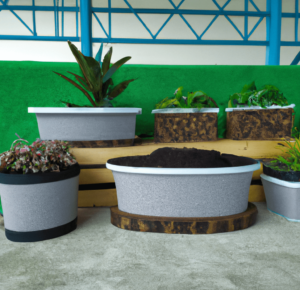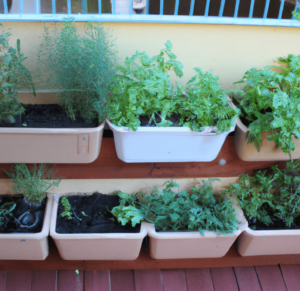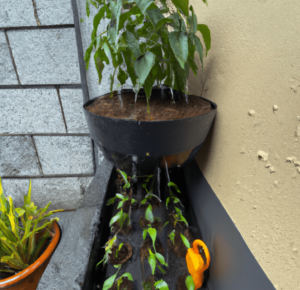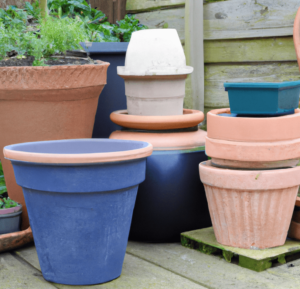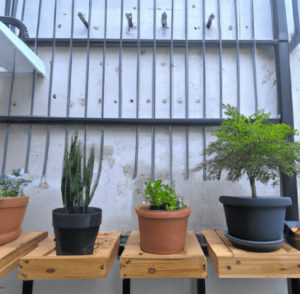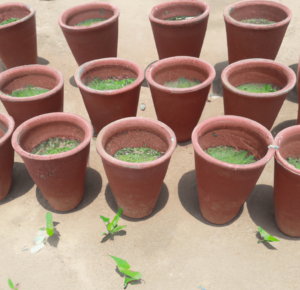Due to its versatility and low maintenance requirements, container gardening has grown in popularity as a method to incorporate nature into even the tiniest spaces. With so many different plants, including herbs, flowers, and veggies, there are countless options for a successful container garden. Container gardening has many advantages in addition to being a terrific way to add some greenery to your area. The plants may be positioned at a comfortable height, making it a fantastic option for people with mobility challenges as well as those with limited outside space or who live in apartments. Additionally, container gardening gives you more control over the soil, water, and lighting conditions, which can result in happier and healthier plants.
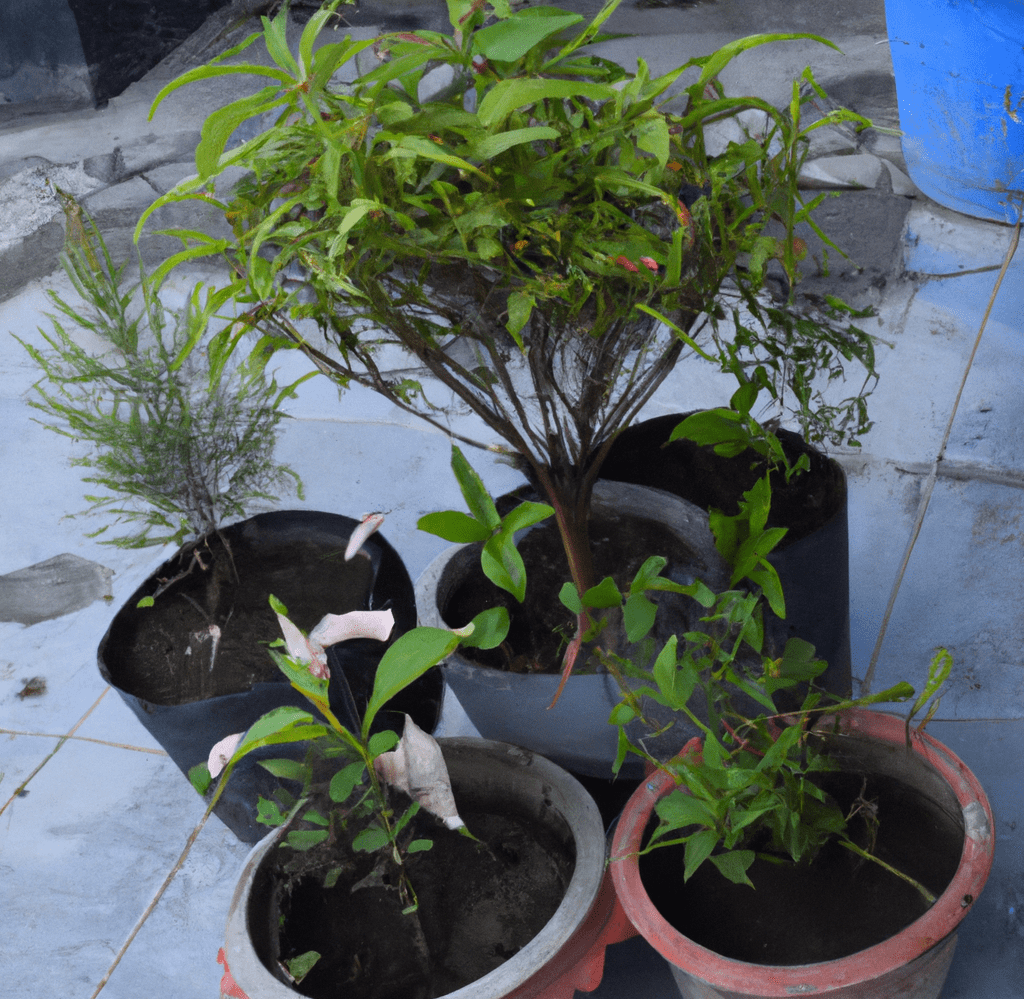
Factors to Consider When Choosing Plants for Container Gardening
There are a number of things to think about when selecting plants for container gardening to make sure your plants will flourish in their new environment. Important factors to take into account are the pot’s size, the soil’s composition, the quantity of sunlight the plant will receive, and its nutritional and water requirements. In addition, factors like the size of the leaves and the type of blossom the plant will produce should be considered in order to get the ideal appearance of your container garden. You may choose the best plants for your container garden and take pleasure in a lovely and flourishing garden for years to come by taking these criteria into account.
Size and Maturity of the Plant
When it comes to container gardening, picking the proper plant’s size and maturity is crucial to a flourishing garden. The size of the plant you select will be greatly influenced by the size of the pot. To ensure that your plant has enough area to grow and develop properly, make sure it is the right size for the pot you have chosen.
The maturity of the plant is another significant factor to take into account in addition to the pot’s size. Young plants will need less room and have smaller root systems, but they can take longer to blossom or mature. On the other side, older plants will have a better established root system and might blossom quicker, but they’ll need more room and might quickly overrun the container.
Climate and Temperature Requirements
Climate and temperature needs are significant factors to take into consideration when choosing plants for container gardening:
- Growing Season: Take into account the plants’ growing season to make sure they are suitable for your area’s climate.
- Choose plants that can withstand both the typical temperatures in your location and any significant temperature swings.
- Sun Exposure: Take into account the amount of sun exposure your plants will get as well as the local sun’s strength.
- Pay attention to the color of your plants’ leaves because it can reveal how well-tolerated heat and light are by those plants.
Sunlight and Shade Preferences
When selecting plants for your container garden, it’s crucial to take their preferences for sunlight and shade into account. The appropriate plant combination can assist ensure that your container garden flourishes because different plants have different needs when it comes to sunshine.
There are many different colors and varieties of flowers and leaves, and many of these will need a certain quantity of sunshine to grow to their maximum potential. While some plants like full light, others thrive under some shade. It will be easier to keep plants healthy and able to produce vivid blooms and foliage if you select plants that are well-suited to your lighting circumstances.
When it comes to container gardening, water is a factor that should also be taken into account in addition to sunlight. While some plants want to be kept continually moist, others prefer to dry out between waterings. To assist assure their success, it’s crucial to choose plants that are compatible with both your outside environment and your watering regimen.
Watering Needs
A crucial component of container gardening is watering, thus it’s crucial to pick plants with similar watering requirements. The quantity of water your plants will need will depend on the size of the pot, the type of soil, and the climate where your container garden is placed.
While some plants want to be kept continually moist, others prefer to dry out between waterings. Furthermore, while some plants are more sensitive and need watering more frequently, others are more drought-tolerant and may survive for longer periods without it.
When selecting which plant kinds to include in your container garden, it’s crucial to take their watering requirements into account. A variety of problems, including stunted growth, drooping leaves, and even plant mortality, can result from either overwatering or underwatering.
Soil and Fertilization Requirements
There are several important things to take into account when it comes to soil and fertilizing in container gardening:
- Depending on the requirements of your plants, choose either well-draining or soil that retains moisture effectively.
- Fertilizer: While some plants require frequent fertilizing because they are heavy feeders, others are more tolerant and can survive with less.
- pH of the soil: When selecting the ideal soil for your container garden, take the pH requirements of your plants into account.
- Compost or well-rotted manure are two organic materials that you may add to your soil to increase its fertility and promote the development of strong, healthy plants.
Pest and Disease Resistance
It’s crucial to take pest and disease resistance into account when selecting plants for container gardening. You may lessen the possibility of difficulties in your garden by choosing plants that are inherently resistant to frequent issues. To choose plants that are less likely to be affected by pests and diseases, take into account aspects including leaf structure, root system, and natural defenses. You can ensure that your container garden stays healthy and yields lovely blooms and foliage by doing this.
Best Plants for Container Gardening
There are numerous options to think about while selecting plants for your container garden. The following plant varieties are some of the best to use in your garden:
- Herbs are excellent alternatives for container gardens, particularly basil, mint, and thyme. They are a practical choice for your garden because they require little maintenance and can be prepared in a variety of ways.
- Vegetables can also be cultivated in container gardens, including lettuce, tomatoes, and peppers. You can have fresh produce close at hand by producing your own vegetables.
- Petunias, geraniums, and marigolds are common flower selections for container gardening. They may enhance the beauty and color of your garden and come in a variety of colors.
- Low-maintenance plants that work well in container gardening include succulents and cacti. They come in a variety of sizes and forms and are simple to maintain.
- Container gardens are a good place to grow ferns and other plants that like the shade. These plants may bring rich, green foliage to your landscape and thrive in cooler, shadier environments.
- Ivy, jasmine, and sweet peas are a few examples of climbing plants that work well in container gardening. They can be trained to scale walls or fences, which will provide height and visual appeal to your garden.
You can make your container garden gorgeous, flourishing, and full of life by picking the correct plants for it.
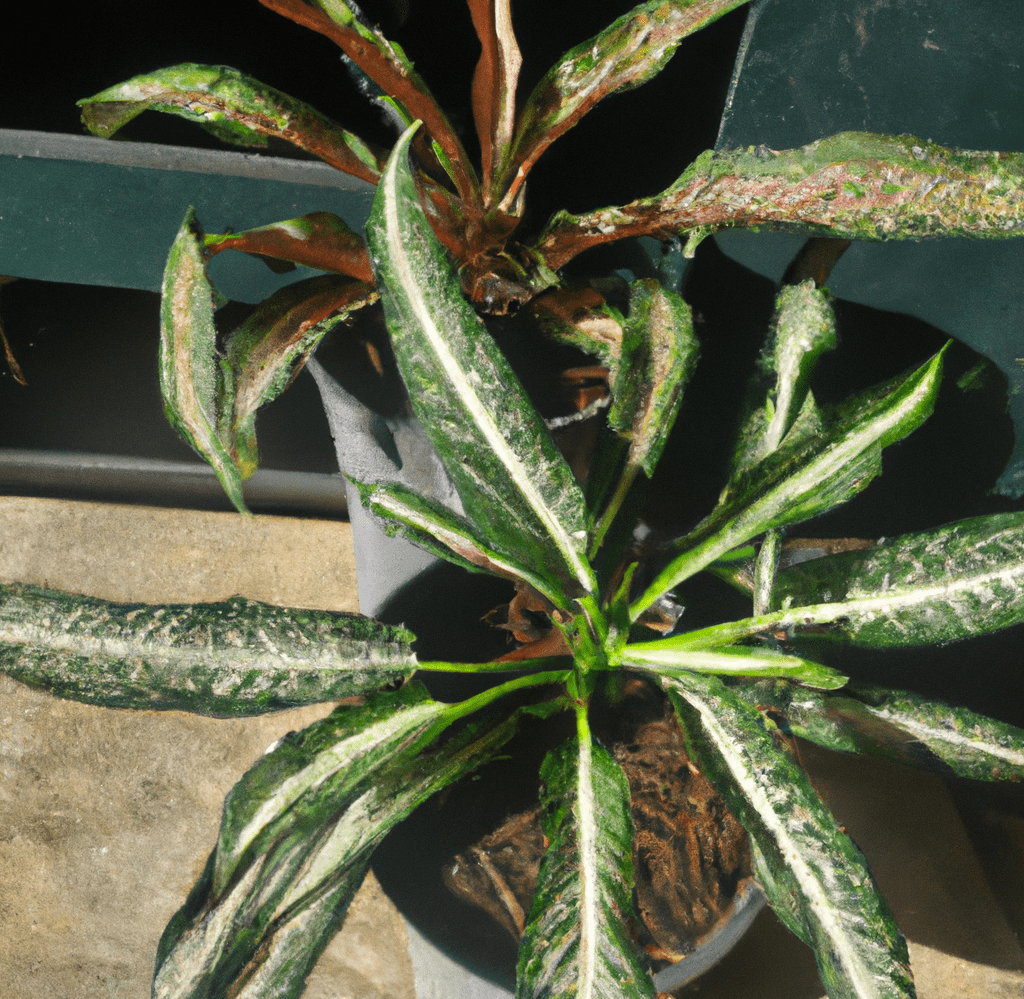
Tips for Container Gardening
Container gardening can be a gratifying and rewarding hobby, but it’s crucial to follow the appropriate procedures to guarantee success. The following advice will help you make the most of your container garden:
- Pick the right container: Decide on a container that is the right size for the plants you are cultivating. Verify that the pot has sufficient drainage, and think about using a saucer to collect any extra water.
- Use the appropriate soil: Select a high-quality potting mix made especially for container planting. The essential drainage and aeration that your plants require will be provided by this sort of soil, which is lighter and fluffier than conventional dirt.
- Water frequently: Because container plants’ roots are restricted, it’s crucial to maintain constant soil moisture. Regularly inspect the soil, and water only when necessary-avoid overwatering.
- Think about how much light your plants require: Choose plants that are appropriate for the amount of sunlight in your yard because different plants have varying light requirements.
- Pests and diseases to watch out for: Keep an eye out for any pests or diseases that could harm your plants. If you spot anything strange, act right away to stop it from getting worse.
You can make sure that your container garden is strong, lively, and thriving by paying attention to the advice given here.
Proper Potting Soil and Drainage
For your container garden to succeed, it is essential to select the suitable potting soil and maintain proper drainage. To give plants better drainage and aeration, potting soil need to be lighter and fluffier than conventional soil. To avoid root rot, the pot should have drainage holes and a saucer to collect any extra water. It may be necessary to fertilize frequently, and it’s crucial to avoid overwatering. For optimal results, check the soil frequently and only water when necessary.
Choosing the Right Size and Shape of Container
It’s critical to choose a container for your container garden that is the right size and shape for the demands of your plants. The growth of the plant will be restricted in a container that is too tiny, and root rot could result in a container that is too large. The design of the container can also influence how well a plant grows; for example, climbing plants do best in tall, narrow containers, whereas plants with shallow roots do well in shallow, wide containers. When choosing a container, take into account the mature plant’s size and shape as well as the quantity of sun and shadow it will experience in your yard.
Watering and Fertilizing Correctly
Your container garden plants’ health and growth depend on the proper watering and fertilizer. Underwatering can cause the plant to become drought-stressed, while overwatering can result in root rot and fertilizer burn. It’s critical to ascertain each plant’s water requirements and modify your watering schedule accordingly. Similar to how different plants have varied demands for fertilizer, make sure to do your study on each plant in your container garden to see what those needs are. The roots will receive crucial nutrients from a high-quality potting mix and regular fertilization, which will maintain strong foliage and blossoms. Always follow the fertilizer application recommendations on the package.
Providing Appropriate Light and Temperature
In a container garden, light and temperature are essential for the health and growth of the plants. Knowing the precise light and temperature needs of each plant in your garden is crucial for creating the ideal environment for each one. The position and direction of the pots can have a significant impact on the quantity and quality of light that plants get. The growth, color, and general health of your plants can be improved by keeping your container garden in an area that offers the correct lighting conditions. It is important to keep an eye on the garden’s temperature because high heat or cold can harm the plants’ ability to flourish. Your container garden will be a vibrant addition to your outdoor space if you create the ideal lighting and temperature conditions.
Protecting From Pests and Diseases
Plants grown in containers may be more prone to pests and diseases because of their limited environment. Regularly monitor your plants for problems and take action if you see any to prevent insects and disease. This could entail removing diseased leaves, using pesticides, and giving them the right care, including regular hydration and sunlight. Furthermore, picking plants that are resistant to widespread pests and diseases might aid in lowering the likelihood of issues. You can make sure that your container garden continues to be healthy and successful for many seasons by taking the required precautions and being proactive.
Container Garden Design Ideas
When it comes to design, container gardening offers a wide range of creative options. You can experiment with different flower types, colors, and textures to design a lovely outdoor area. Here are some creative ideas for container gardens to get you started:
- Combining plants for color, texture, and contrast: Try diverse plants whose hues, textures, and forms contrast with one another. This will help your container garden have a unified appearance.
- Utilizing Container Gardens as Accents or Focal Pieces: Container gardens are fantastic focal points for any outdoor area. Think about utilizing them to add a splash of color or a decorative element to a basic wall or fence.
- Making themed gardens: Take into consideration making a succulent, herb, or flower themed garden. This will direct your choices and help you produce a unified appearance.
- Using container gardening in small areas: Container gardening is a fantastic way to grow plants in areas that are limited in space, such as balconies, patios, or terraces. Even if you don’t have much ground space, you can utilize pots to give certain places a bit of green.
- A beautiful container garden can be created on a balcony, terrace, or patio If you live in an apartment or have a small yard, you can construct a lovely container garden on your balcony, terrace, or patio. Choose the appropriate pot-friendly plants, and take pleasure in a small bit of greenery in your urban environment.
Bottom Line: The Best Plants for Container Gardening
The beauty of plants can be added to balconies, patios, terraces, and small spaces with container gardening, to sum up. Container gardens can present a distinctive opportunity to experiment with color, texture, and contrast because they come with a wide variety of plants to pick from, including herbs, vegetables, flowers, succulents, cactus, ferns, and more. Whether you are an experienced gardener or a novice, container gardening offers a creative and entertaining outlet for learning about plants.
It’s critical to select the ideal container size and shape, use suitable potting soil and drainage, water and fertilize properly, and offer the right amount of light and temperature for your container garden. Additionally, keeping your plants healthy and thriving requires safeguarding them from pests and illnesses.
We invite you to experiment with various plants and concepts for container gardens and to share your findings and advice with others. Have fun and enjoy the process; the beauty of container gardening is that there are countless opportunities to design your own private haven.
The Best Plants for Container Gardening FAQs
What is container gardening?
Plants may be added to even the tiniest spaces through the use of containers. Container gardening is a flexible and low-maintenance approach to bringing nature into your house because there are so many alternatives for plants, including herbs, flowers, and veggies.
What benefits may container gardening offer?
There are several benefits to container gardening, including the ability to grow plants at a comfortable height, more control over the soil, water, and lighting conditions, and the possibility to grow a garden in an apartment or small outdoor space.
What elements shoul I take into account when selecting plants for container gardening?
The size of the pot, the soil’s make-up, the quantity of sunshine the plant will receive, its nutritional needs, drainage, the size of the leaves, the type of blossoms, and the plant’s size and maturity should all be taken into account when selecting plants for container gardening.
How does container gardening differ depending on the size and maturity of the plant?
The pot’s size has an impact on the plant’s size, and the maturity of the plant has an impact on its root system and flowering period. While older plants may have a more solid root system and may bloom more quickly but require more room, younger plants will require less space and blossom more slowly.
What factors should I take into account while selecting plants based on their climatic and temperature needs?
You should take the growing season, temperature, and light exposure into account when selecting plants based on their needs for a particular climate and temperature range. How well the plant tolerates heat and light can also be determined by the color of the leaves.
How do preferences for shade and sunlight impact container gardening?
It’s important to take their preferences for sunlight and shade into account when selecting plants for container gardening. The success of your container garden can be increased by selecting the proper combination of the varying sunlight requirements of your plants.
What factors should I take into account when determining how much water my container garden needs?
You should think about the plants’ watering requirements while choosing them for container gardening. The size of the pot, the kind of soil, and the environment all affect how much water the plants require. While some plants prefer to dry out between waterings, others require constant moisture.
What factors should I take into account when determining the soil and fertilization needs for container gardening?
When choosing plants for container gardening, you should take into account the kind of soil, fertilizer, soil pH, and use of organic fertilizer, as well as the plants’ needs for soil and fertilizing.
What impact do disease and insect resistance have on container gardening?
It’s crucial to take pest and disease resistance into account when selecting plants for container gardening. Your container garden can succeed if you choose plants that are tolerant of these problems.


